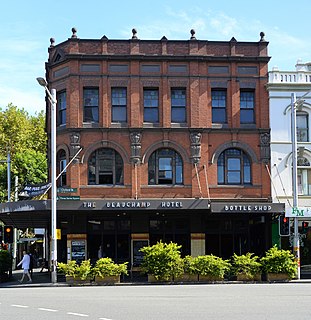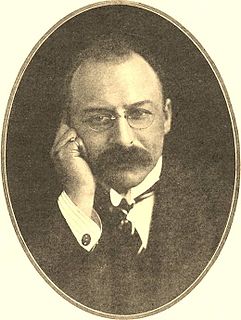Related Research Articles

Darlinghurst is an inner-city, eastern suburb of Sydney, New South Wales, Australia. Darlinghurst is located immediately east of the Sydney central business district (CBD) and Hyde Park, within the local government area of the City of Sydney.

Crows Nest is a suburb on the lower North Shore of Sydney, New South Wales, Australia. It is also part of the North Sydney region, 5 kilometres north of the Sydney central business district, in the local government area of North Sydney Council.

Kings Cross is an inner-city locality of Sydney, New South Wales, Australia. It is located approximately 2 kilometres east of the Sydney central business district, in the local government area of the City of Sydney. It is bounded by the suburbs of Potts Point, Elizabeth Bay, Rushcutters Bay and Darlinghurst.

SCEGGS Darlinghurst is an independent Anglican single-sex primary and secondary day and boarding school for girls, located in Darlinghurst, an inner-city, eastern suburb of Sydney, New South Wales, Australia.

Louise Lovely was an Australian film actress. She is credited by film historians for being the first Australian actress to have a successful career in Hollywood, signing a contract with Universal Pictures in the United States in 1914. Lovely appeared in 50 American films and ten Australian films before retiring from acting in 1925.

Matilda Mary Devine, known as Tilly Devine, was an English Australian organised crime boss. She was involved in a wide range of activities, including sly-grog, razor gangs, and prostitution, and became a famous folk figure in Sydney during the interwar years.

The National Art School (NAS) is a tertiary level art school, located in Darlinghurst, an inner-city suburb of Sydney, New South Wales, Australia. The school is an independent accredited higher education provider offering specialised study in studio arts practice across various disciplines.

George Marlow was an Australian theatrical entrepreneur born in London of Jewish extraction, noted for bringing melodrama and pantomime to Sydney audiences in the early 1900s. His name has been frequently mis-spelled as "George Marlowe".

Moonlite is a 1910 bushranger film about Captain Moonlite, played by John Gavin, who also directed. It was also known as Captain Moonlite and is considered a lost film.

The Romantic Story of Margaret Catchpole, generally referred to as Margaret Catchpole, is a 1911 Australian silent film directed by Raymond Longford and starring Lottie Lyell. It is based on the true story of Margaret Catchpole, an adventurer and convict.
It Is Never Too Late to Mend is an Australian feature-length silent film written and directed by W. J. Lincoln. It was based on a stage adaptation of the popular 1865 novel It Is Never Too Late to Mend: A Matter-of-Fact Romance by Charles Reade about the corrupt penal system in Australia. It was called "certainly one of the best pictures ever taken in Australia."
Edward Irham Cole was an Australian film director and theatrical entrepreneur who specialised in Wild West shows.

Convict Barracks Block is a heritage-listed convict barracks within the Prison Barracks Precinct, Cockatoo Island, Sydney Harbour, New South Wales, Australia. It was added to the Australian Commonwealth Heritage List on 22 June 2004.
Theodore Emil Argles was an Australian journalist described as "amazingly clever and desperately erratic", who wrote under a variety of names, including "Pasquin", "Harold Grey" and "The Pilgrim".
The Royal Lyceum was a small theatre in York Street, Sydney founded in 1854, which was redeveloped and renamed many times, finally as the Queen's Theatre, by which name it closed in 1882.
Charles Darrell was an English playwright who specialized in melodrama.

The Royal Standard Theatre, often referred to as the Standard Theatre was a small playhouse in Sydney, Australia, situated at 223 Castlereagh Street, near the Bathurst Street corner between Bathurst and Liverpool streets, and next to the fire station. It was later known as the Little Theatre and The Playhouse, and was demolished in the early 1920s.
The Warning is a melodrama written by "Henry Bosnell" on the subject of white slavery and promoted as a remedy to an urgent social evil. It opened at the Little Theatre, Sydney on 22 November 1913 and ran for six weeks to good houses.
Wilton Welch was an Australian comic actor and dramatist, husband and collaborator of Louise Carbasse, best known as Louise Lovely.
References
- ↑ "Stage Song & Show". The Sun (Sydney) (486). New South Wales, Australia. 21 July 1912. p. 15. Retrieved 26 September 2021– via National Library of Australia.
- ↑ "Princess Theatre". Table Talk (1460). Victoria, Australia. 17 July 1913. p. 17. Retrieved 26 September 2021– via National Library of Australia.
- ↑ "The Girl Who Loved a Soldier". The Sydney Morning Herald (23, 259). New South Wales, Australia. 29 July 1912. p. 4. Retrieved 25 September 2021– via National Library of Australia.
- ↑ "Princess Theatre". Table Talk (1460). Victoria, Australia. 17 July 1913. p. 20. Retrieved 25 September 2021– via National Library of Australia.
- ↑ "The Playgoer". Melbourne Punch . CXIX (3025). Victoria, Australia. 17 July 1913. p. 36. Retrieved 26 September 2021– via National Library of Australia.
- ↑ "Adelphi Theatre". The Sun (Sydney) (487). New South Wales, Australia. 28 July 1912. p. 2. Retrieved 26 September 2021– via National Library of Australia.